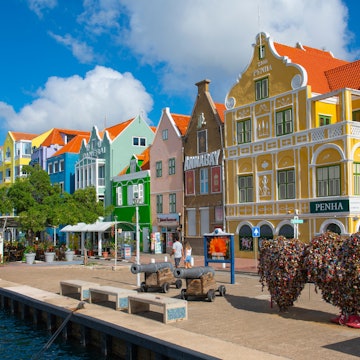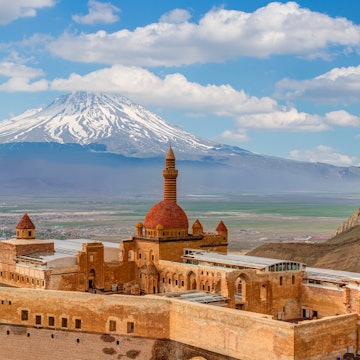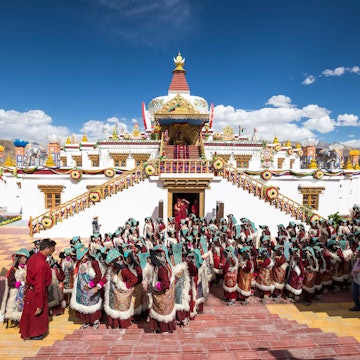
Inside the weird and wonderful world of airline goodie bag amenity kits

Aug 30, 2019 • 5 min read

Singapore Airlines offers a Lalique Néroli scented candle in first class © Formia
Ever walked past those first and business class seats and had your eye caught by one of those snazzy little amenity kits — or, even better, been presented with one of these airline goodie bags in flight?

Amenity kits are huge business for airlines, and it’s not just providing a toothbrush and those weird plasticky airline socks for passengers either. It’s everything from designer clutches to reusable shopping bags, from full-size bottles of eau de toilette to luxury scented candles… which are, of course, not for onboard use!
I sat down with Ronald Loh, who has been creating amenity kits with one of the industry’s major players for over five years, to learn more about how it all works.
To start with, I asked, 'how do you define an amenity kit?'
'An amenity kit is a package of personal care items airlines provide long-haul flight passengers,' Loh says. 'Amenity kits are mostly given to First, Business, and Premium Economy passengers.'
'Typically,' he explains, 'an amenity kit comes with a bag or pouch containing a dental kit, skincare and cosmetic items, earplugs, socks, and an eye mask. Depending on the airline and travel class, the amenity kit may come with a vial of high-end fragrance and a wider assortment of premium cosmetics.'
But amenity kits are evolving from just what you might need on the plane to a little present from the airline.

'While amenity kits grew out of the need to cater to immediate passenger needs, they gradually evolved into a significant component of the inflight experience through innovative products and premium brand collaborations,' Loh says.
These brand collaborations occur with everyone from luggage makers like Rimowa (Lufthansa, EVA Air) and Tumi (Delta) to luxury brands like Salvatore Ferragamo (Singapore Airlines), all the way down to Finnair’s ongoing partnership with Finnish designer Marimekko’s iconic prints.
'It all begins with a thorough understanding of both the airlines and passengers’ needs as no two programmes are identical,' Loh tells me. 'We then follow a cross-teams process to create products combining form, function, aesthetics, and ideal brand alignment to enhance the cabin and travel experience.'
Beyond the obvious things like weight, size and cost, this design process covers any number of factors you might not think about.
Does an airline want to offer a different type of amenity kit on flights into and outbound from its main hub? Does it want to offer something different to certain country markets as opposed to others? Will it offer a reduced set of amenities on daytime flights and a wider choice for overnight red-eyes? What about those all-important medium-haul flights where competition is high and amenities are often lacking?
The brand choice is equally important for airlines — and of course for the brands themselves, since nobody wants to be associated with an airline that has a poor reputation for comfort, service and passenger experience. At the same time, there’s a real benefit to working with a brand partner from home.

'Brand alignment has been the name of the game these past couple of years,' Loh says. 'Rather than placing any well-known branded product on-board, passengers expect to see well-thought-out brand collaborations that make sense and create a seamless travel experience.'
Finnair does this really well with its Marimekko kits, while Japan Airlines’s Shiseido amenities are both luxurious and Japanese. Swiss, meanwhile, includes items from Swiss brands like Bally and La Prairie, while Air France uses Clarins.
'Passengers have become more tech-savvy and vocal on social media,' Loh explains. 'They are more willing to try modern millennial brands and the eco-conscious lifestyles they stand for. Brands and trends also come and go faster these past couple of years.'
With so many of us increasingly conscious about our ecological impact, especially given that international flights are often restricted from recycling their waste for human health and biosecurity reasons, there are questions about how environmentally friendly little pots of plastic in individual bags can be.
'Fortunately, the demand for eco-friendly solutions is propelled by eco-conscious travellers and regulatory bodies,' Loh says. 'We see this happening through a shift to smart materials. We have been replacing traditional fabrics with smart materials like Tyvek or vegan leather for years. We also partnered with selected skincare brands that follow strict sustainable, zero-carbon manufacturing methods and use the finest organic and natural ingredients.'
It seems clear to me, however, that more needs to be done. Within the aviation industry we’ve seen a fair amount of greenwashing in the name of cost-cutting over the years: paper wrapping for amenity kits, and so on. But there comes a point at which, no matter how much lighter you make the bag, if it’s not reused it becomes waste.
(And anyone walking through a business or first class cabin on their way out of the aircraft will see just how many of the kits are left behind, partially used.)
Some airlines, like Singapore Airlines in business class, already prefer to pass around a basket with items for passengers to take, with more options being available in the lavatories. This is inherently more environmentally friendly — not everyone wants the socks, or the lip balm — and, helpfully for airlines, a lot cheaper too.
The trick, though, is to take account of the 'goodie bag giveaway' aspect. Perhaps a neatly branded, reusable bag available on demand rather than given to everyone, which could be used to store your clothes while you slip into pyjamas on board, and then used for shopping when you get home? Or a neatly branded, ultra-lightweight packing cube?
As an aviation journalist based in France, John Walton writes regularly on travel for Lonely Planet and a variety of aviation magazines. He welcomes questions and discussions from readers on Twitter (he’s @thatjohn) or via email to john@walton.travel













